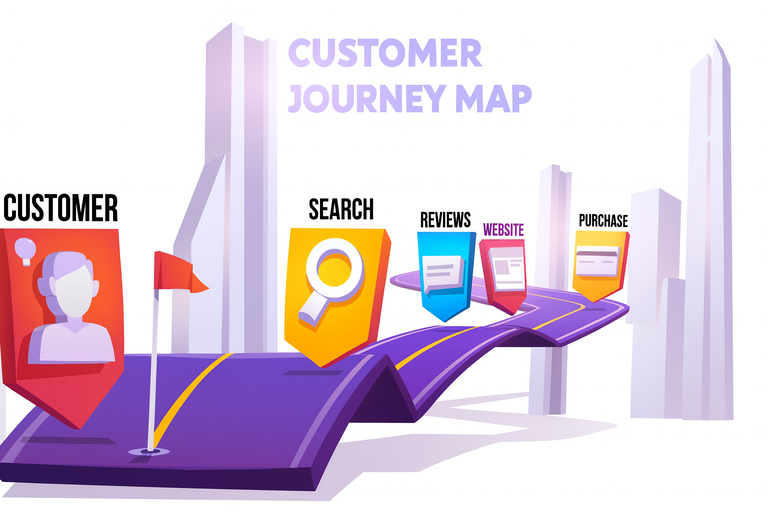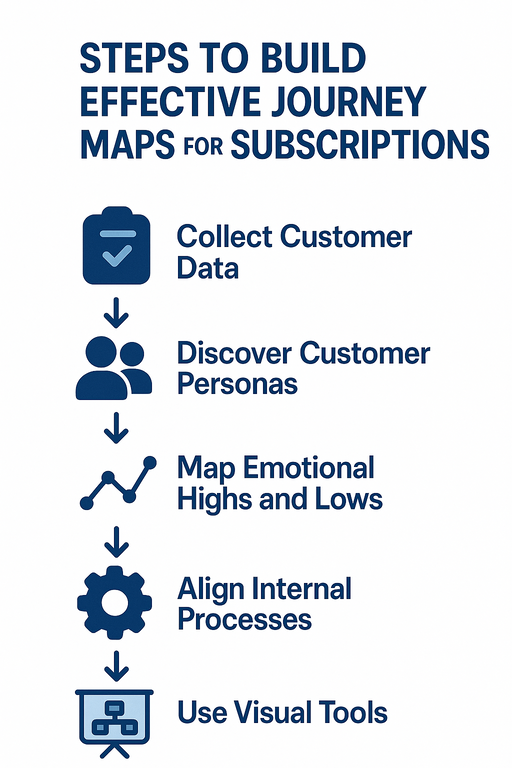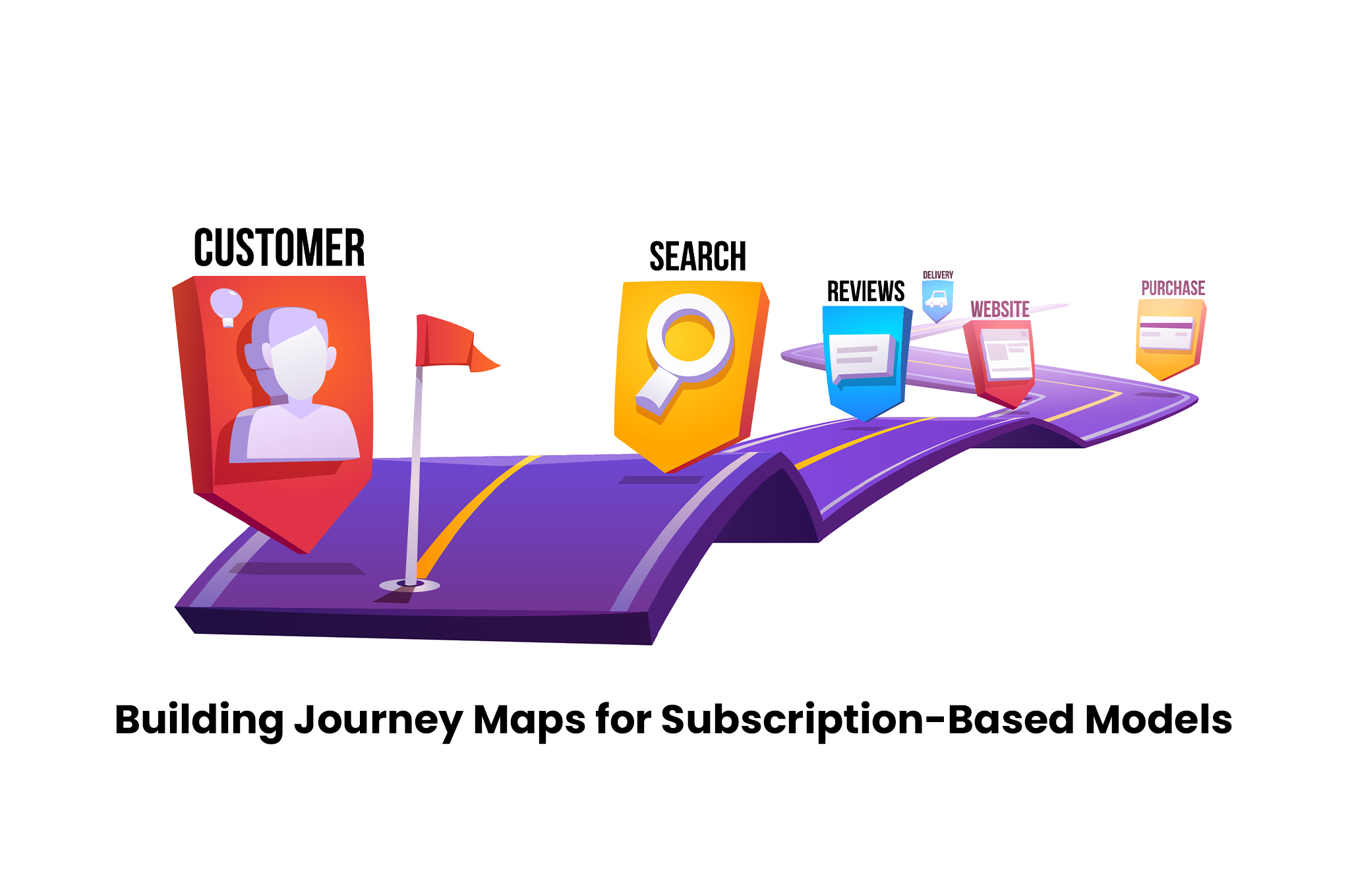Building Journey Maps for Subscription-Based Models
Customer journey mapping means customer experience mapping. It is a process of learning and analyzing the experiences of the customers, right from the time they register and through all their transactions. Through this, you can track the place or step in the journey where processes are smooth and also where interventions are needed for customer retention.
If you wonder why it is so important, in a subscription-based business, recurring revenue mostly depends on delivering a consistent experience. When every touchpoint is seamless, there is a chance that subscribers will stay engaged and continue their subscription.
When all interfaces are seamless, it improves the possibility that subscribers will remain engaged and continue their subscription. This guide offers practical steps in designing a successful subscription journey map, which allows companies to proactively respond to customer needs, improve satisfaction, and reinforce their subscription model strategy. To put it simply, journey mapping for subscriptions turns insights into actionable steps that drive decision-making and make every point of the subscriber journey provide value.
What is a Customer Journey Map in Subscription Models?

A customer journey map aligned with subscription models shows the complete journey of a subscriber’s engagement over time, with each stage from awareness to renewal mapped. This differs from a simple product purchase customer journey map, as it focuses on long-term relationships and ongoing interactions instead of one-time purchases. Critical touchpoints in the subscription customer journey is discovery, acquisition, onboarding, retention, and renewal.
By mapping and identifying customer pain points and opportunities to improve satisfaction and customer experiences, businesses can decrease friction and enhance customer loyalty. Mapping customer touchpoints identifies gaps, maximizes strategies, and makes every point of contact contribute to the subscriber experience.
You may also like: Cross-Platform Retargeting: Smarter Automation Strategies
Why Journey Mapping is Critical for Subscription Businesses
Journey mapping is key for subscription businesses because of the following. Keep reading!
- Improves Retention: Journey mapping improves a subscription retention strategy by creating loyalty and continuing engagement at all touchpoints.
- Avoids Churn: Friction points reveal themselves for customer churn prevention, so teams can resolve issues before dissatisfaction pushes them to cancel subscriptions.
- Improves Personalization: Personalizing the customer journey gives access to targeted offers that can be a further value to the client, as well as help the company establish a stronger relationship with the customer.
- Value is Optimized to the Maximum Extent: By using customer data mapping, it is possible to achieve the largest customer lifetime value optimization, thus ensuring continuous satisfaction, higher revenues, and a deeper loyalty across the subscription life cycle.
Key Stages in Subscription-Based Journey Maps
The crucial stages involved in subscription-based journey maps are listed below.
Awareness
Customers discover your brand at first through marketing, social recommendations, and online research, which creates impressions to show interest in your subscription service and kickstart the subscription customer journey.
Acquisition
The use of free trials, coupons, and easy sign-up can motivate prospects to subscribe, initiate the first engagement experience with a value proposition, and enhance overall subscription customer experience design compared to alternatives.
Onboarding
A customer onboarding journey helps new subscribers through setup and adoption features. Supports easy adoption and minimizes frustration while creating a positive first impression, and a foundation for long-term enjoyment and engagement.
Engagement and Retention
A subscription engagement strategy, in line with the subscriber experience, provides value, resolves problems, prompts use of the platform, and generates a relationship that contributes to consumer happiness in the long term, while also reducing churn over time.
Renewal/Upgrade
Efficient renewal workflows and upselling enhance plan continuation, promote upgrades, and facilitate uninterrupted service for the subscriber while generating opportunities to boost revenue and deepen long-term relationships.
Churn & Win-back
Churn win-back campaigns target subscribers who have lost interest and attempt to recover their revenue potential. Using customer journey best practices like offering the right incentives, delivering messages that are relevant, and delivering care proactively helps reconnect with the customer, rebuild their loyalty, and recover lost revenue.
Steps toBuild Effective Journey Maps for Subscriptions

Collect Customer Data
Gather both behavioral, demographic, and transactional data to investigate subscriber behavior, wants, and needs, utilizing customer journey mapping as support for how to design customer experience at all stages and interactions.
Discover Customer Personas
Use the collected data to generate rich customer profiles by tier, outlining goals, needs, and pain points to support customer persona mapping that informs personalized customer engagement and management.
Map Emotional Highs and Lows
Document customer thoughts, actions, emotions, and reactions at each stage of the subscription journey, and identify friction points and delight experiences that enhance the subscription journey workflow.
Align Internal Processes
Align all functions of every department and their actions to the needs of the subscriber, including a prescribed customer onboarding journey with clear guidelines within processes, communication, and support to, in turn, create consistent experiences that reflect consumer expectations and develop loyal subscribers over time.
Use Visual Tools
Illustrate customer experience design and maintain it as a visual model, update it regularly to reflect changed behaviors, gain your company’s process efficiency, and increase customer experience in order to retain their loyalty over long-term subscriptions.
Benefits of Journey Mapping in Subscription Models
Enhanced Personalization
Subscriber needs and feelings are understood to enable personalized communication and promotions, enhancing engagement and showing care, building subscription customer loyalty, and overall satisfaction across the journey.
Better Onboarding
Streamlining onboarding processes reduces friction, accelerates adoption, and lowers early cancellations, making way for subscription experience optimization and allowing for long-term retention for sustainable revenue growth.
Clearer Product Insights
Customer journey mapping reveals pain points, behavior, and preferences and informs strategic product development, feature enhancements, and improvements that resonate with subscriber expectations and requirements.
Increased Satisfaction and Loyalty
Anticipating issues and addressing them ahead of time results in smoother journeys, greater satisfaction, and longer-term engagement, while strengthening subscription customer loyalty and positive advocacy through customer experience design.
Improved Internal Alignment
Journey mapping promotes cross-functional collaboration between sales, marketing, and support teams, breaking silos, enhancing communication, and leveraging the customer onboarding journey to deliver unified experiences while highlighting the benefits of journey mapping across the business.
Best Practices for Subscription Journey Maps
Ongoing Updates
Ongoing relevant updates to the subscription journey map that incorporate behavioral data, plus feedback and insights from research, will ensure that the map is accurate, relevant, and continues to include actionable insights based on customer journey best practices throughout the touchpoints.
Tracking Automations
Design a single subscription marketing automation strategy that captures insights from every interaction with customers, including behaviors, removes the analytical work from teams, and helps make data-based choices for stronger engagement, retention, and sustainability performance.
Clarity & Actionable
Use journey mapping to visually outline points of clarity and actionability for teams of all sorts, to point out the data, friction points, and driving improvements in overall subscription customer experience design.
Align to KPIs
Link your journey map to retention and churn KPIs, as well as lifetime value measures, and use the benefits of journey mapping to identify potential opportunities, enhance approaches, and ultimately promote customer loyalty through the subscription journey.
Cross-Functional Discussion
Include other teams as you develop your journey maps, plus marketing, sales, product, and support teams. Sharing a journey map can align efforts, and integrating the customer onboarding journey ensures cohesion, consistency, and improved customer satisfaction.
Conclusion
Personalise Customer journey mapping is a key driver of growth for subscription-based businesses. Mapping all subscriber touchpoints informs experiences that are improved, satisfaction that’s increased, and churn that’s minimized with effective retention workflows.
Journey maps empower teams to anticipate issues, customize messaging, and enhance engagement, allowing for a strong subscription model strategy. The first step that you would need to take if you wanted to create a subscription journey map that is smarter and data-based is to reach out to Obbserv for assistance. This helps you build your subscriber experience, but will improve retention and income every step of the way.

